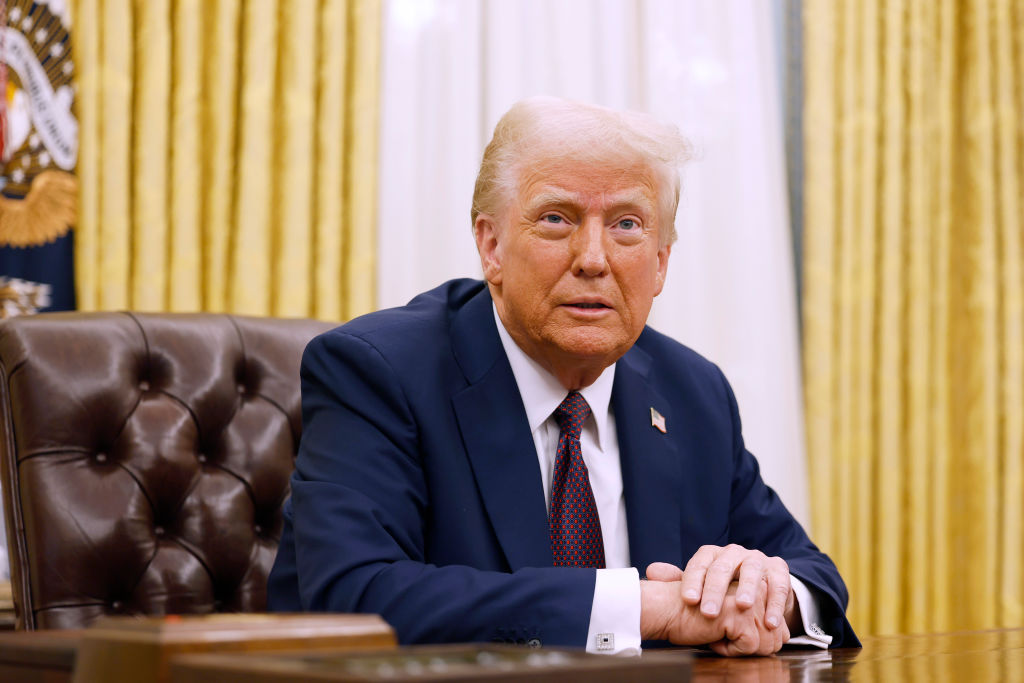Why Gross Domestic Income Is a Better Barometer of the U.S. Economy
Using income as a yardstick puts a different spin on the economy.


Justin Wolfers is associate professor of business and public policy at the Wharton School of the University of Pennsylvania.
Gross domestic product is the best-known measure of the economy. But you say there's another.
SEE ALSO: Kiplinger's Economic Outlooks

Sign up for Kiplinger’s Free E-Newsletters
Profit and prosper with the best of expert advice on investing, taxes, retirement, personal finance and more - straight to your e-mail.
Profit and prosper with the best of expert advice - straight to your e-mail.
Well, there are two ways of measuring GDP, which is the value of all goods and services produced in the U.S. One way is to measure every dollar that's spent on final goods and services -- by convention, that's called GDP. The other way is to measure income in the economy, including wages, interest and profits, which is called gross domestic income, or GDI. Because every dollar spent is a dollar earned by someone else, the two are conceptually equivalent. But in reality, these alternative measures are based on somewhat different data. As a result, they don't always move together and can give very different signals.
Is GDI a better measure?
It turns out that the data we collect on income provide a more accurate indicator of the pace of economic growth than the data we collect on how much people spend -- particularly at turning points in the economy. A spectacular instance of this was the Great Recession of 2007–09. When the economy first turned down, the GDP figure showed the economy was falling, but not very quickly. GDI pointed to a severe decline in growth, which we now know was correct.
What is GDI telling you now?
GDI told me that in the middle of 2011 the economy was very close to falling back into recession. Currently, GDI is telling me the economy is stronger than generally thought. In the fourth quarter of 2011, GDI grew at a healthy 4.4% clip, compared with GDP, which grew at 3%. I feel more confident that the economy grew at a healthy pace in the first quarter of 2012 as well, even though the GDP estimate of 2.2% growth was a bit disappointing.
What's the most important indicator to watch now?
The most informative about the state of the U.S. economy is nearly always the jobs report that comes out the first Friday of each month. I religiously set my alarm so that I don't miss the 8:30 a.m. release. My partner used to be chief economist at the Labor Department. So our 2½-year-old is used to missing breakfast with her parents on employment-report Fridays.
Get Kiplinger Today newsletter — free
Profit and prosper with the best of Kiplinger's advice on investing, taxes, retirement, personal finance and much more. Delivered daily. Enter your email in the box and click Sign Me Up.

-
 Stock Market Today: Stocks Gain on Tech, Auto Tariff Talk
Stock Market Today: Stocks Gain on Tech, Auto Tariff TalkThe Trump administration said late Friday that it will temporarily halt tariffs on some Chinese tech imports.
By Karee Venema
-
 Sam's Club Plans Aggressive Expansion: Discover Its New Locations
Sam's Club Plans Aggressive Expansion: Discover Its New LocationsSam's Club expansion plans will open up to 15 new stores each year. Learn where they plan to open in 2025.
By Sean Jackson
-
 The AI Doctor Coming to Read Your Test Results
The AI Doctor Coming to Read Your Test ResultsThe Kiplinger Letter There’s big opportunity for AI tools that analyze CAT scans, MRIs and other medical images. But there are also big challenges that human clinicians and tech companies will have to overcome.
By John Miley
-
 The New Space Age Takes Off
The New Space Age Takes OffThe Kiplinger Letter From fast broadband to SOS texting, space has never been more embedded in peoples’ lives. The future is even more exciting for rockets, satellites and emerging space tech.
By John Miley
-
 Rising AI Demand Stokes Undersea Investments
Rising AI Demand Stokes Undersea InvestmentsThe Kiplinger Letter As demand soars for AI, there’s a need to transport huge amounts of data across oceans. Tech giants have big plans for new submarine cables, including the longest ever.
By John Miley
-
 What DOGE is Doing Now
What DOGE is Doing NowThe Kiplinger Letter As Musk's DOGE pursues its ambitious agenda, uncertainty and legal challenges are mounting — causing frustration for Trump.
By Matthew Housiaux
-
 A Move Away From Free Trade
A Move Away From Free TradeThe Letter President Trump says long-term gain will be worth short-term pain, but the pain could be significant this year.
By David Payne
-
 Trump’s Whirlwind Month of Crypto Moves
Trump’s Whirlwind Month of Crypto MovesThe Kiplinger Letter The Trump administration wants to strengthen U.S. leadership in the cryptocurrency industry by providing regulatory clarity.
By Rodrigo Sermeño
-
 Donald Trump Tests His Limits
Donald Trump Tests His LimitsThe Kiplinger Letter President Encounters Legal Obstacles in Pursuit of Ambitious Agenda.
By Matthew Housiaux
-
 Another Down Year for Agriculture
Another Down Year for AgricultureThe Kiplinger Letter Farmers brace for falling incomes, widening trade deficits
By Matthew Housiaux